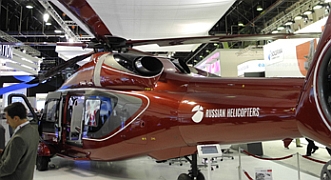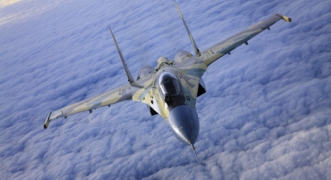Russia close to completing its F-22 aircraft rival

T-50 will replace MiG-29 and Su-27 fighter jets in the Russian Air Force. Source: ITAR-TASS
According to United Aircraft Corporation CEO Mikhail Pogosyan, five T-50s are participating in the testing program, which has allowed Russian designers to speed up the process and close the gap with the United States.
The F-22 has been serving in the U.S. Air Force for a long time and, for good reason, is still considered to be the most advanced fighter. Far less is known about its Russian rival.
According to its designers, the T-50 is the embodiment of the latest in Russian aircraft technology.
A number of innovative solutions have been implemented in the machine, including stealth technology, new construction materials and coatings, artificial intelligence and the element base, which have brought Russia’s military aircraft building to a qualitatively new technological level.
A whole range of the latest polymer carbon plastics have made their debut on the T-50. They weigh 50 percent less than titanium or aluminum of comparable rigidity, and they are 20-25 percent lighter than steel.
New materials cover 70 percent of the fighter’s surface. Its weight has been reduced to just a quarter of that of a fighter made of conventional materials, allowing the designers to increase its combat load.
The Sukhoi Design Bureau has mentioned “the PAK FA’s unprecedentedly low level of radar, optical and infrared visibility.” The T-50’s effective reflective area will amount to 5.3 square feet (its predecessor, the Sukhoi-30MKI, has 215 square feet).
This means that the Sukhoi-30MKI appears on the radar screen as a large metal object, while the T-50’s reflection would only be one-fortieth of that, making it much more difficult to notice or aim weapons at it — especially since the machine benefits from the exceptional maneuverability that has been a hallmark of Sukhoi fighters.
In addition, the T-50 meets the main requirement of modern fighters—a high degree of intellectualization.
Its radar, complete with an active electronically-scanned array (AESA), can “see” everything that is going on in the air or on the ground at a distance of hundreds of miles.
It can track multiple airborne and surface targets simultaneously, while keeping them in the crosshairs of its weapons.
Several dozen sensors attached to different parts of its hull not only enable it to monitor the surroundings but also to exchange real-time data with ground control and within its airborne unit at the same time.
The T-50’s “e-pilot” functionality is constantly analyzing the situation, offering the pilot several options on which to act.
The pilot will receive the bulk of flight and combat data in the form of symbols and signs, making it easier to process and substantially easing the pressure on the pilot, while allowing him to focus on the tactical mission at hand.
The T-50 can take off and land from a runway that is only roughly 1,100 feet long. Going forward, it will serve as a basis for a navy variant. Weapons will be stored completely in internal compartments, to meet the stealth technology’s requirements.
Related:
Ka-52 Alligator attracts new contractors in Paris Air Show
Russian Air Force will start receiving 5th generation fighter in 2015-2016
According to certain reports, those compartments would be able to carry up to eight R-77 air-to-air missiles, or two 3,300-pound, guided aerial bombs.
Additionally, two long-range missiles could be suspended externally, to allow the fighter to engage targets located as far as 250 miles away.
The fact that India has joined in development of the fighter suggests that the program is promising and meets the highest standards. New Delhi has allocated almost $25 billion for this purpose and expects to obtain a proprietary version of the fifth-generation fighter by 2018.
It is this machine that will be exported, according to Russian specialists, while the Russian-made T-50 will remain an exclusively domestic model—like the American F-22. Russian airmen expect to take delivery of the first serially produced fighters as soon as 2013, and they plan to purchase at least 70 units.
Click to enalrge the infographics 'Russian fifth-generation fighter jet'
All rights reserved by Rossiyskaya Gazeta.
Subscribe
to our newsletter!
Get the week's best stories straight to your inbox



